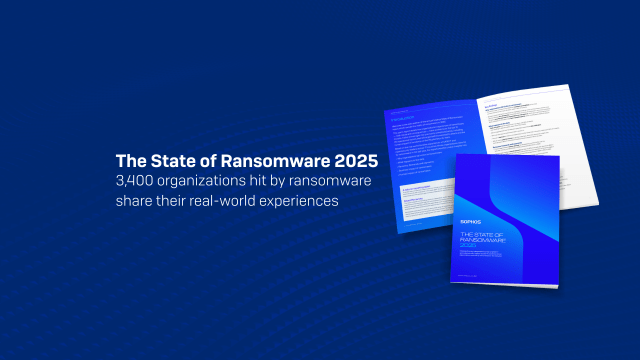Top Highlights
-
Ransomware Vulnerabilities: Organizations commonly fall victim to ransomware due to a mix of technical issues (32% attributable to exploited vulnerabilities) and operational challenges, with an average of 2.7 contributing factors identified per incident.
-
Data Recovery Outcomes: While 97% of organizations managed to recover encrypted data, the success rate of recovery through backups has hit a six-year low, with 49% of those who paid the ransom successfully retrieving their data.
-
Ransom Payment Trends: Initial ransom demands and actual payments dropped, particularly for amounts exceeding $5 million. The average payment was 85% of the initial demand, indicating a trend where 53% of organizations paid less than initially requested.
- Cost and Recovery Efficiency: Recovery costs from ransomware decreased by 44% this year (averaging $1.53 million), with more organizations (53%) recovering within a week, demonstrating improved responses to ransomware attacks.
Underlying Problem
The Sophos State of Ransomware report reveals critical insights into the pervasive issue of ransomware affecting organizations globally, highlighting the myriad factors leading to these damaging attacks. The report synthesizes data from over 3,400 IT and cybersecurity professionals across 17 nations, focusing particularly on the blend of technical vulnerabilities—such as exploited weaknesses (32% of incidents) and compromised credentials (23%)—and organizational shortcomings. Alarmingly, it indicates that many companies confront multiple operational hurdles that increase their susceptibility to these threats, with the average organization identifying roughly three contributing factors.
In terms of recovery, the report offers a glimmer of hope: 97% of victimized organizations successfully retrieved their encrypted data, although reliance on backup systems has declined to its lowest in six years. Furthermore, while the average ransom demands have decreased, a substantial portion (57%) still exceeds $1 million. Strikingly, the financial toll of recovery efforts—excluding ransoms—saw a considerable drop, emphasizing improvements in recovery strategies. The report aims to elucidate these dynamics, providing organizations with actionable insights to bolster their defenses against ransomware, and is crucially reported by Sophos, a leader in cybersecurity solutions.
Security Implications
The findings from the sixth annual Sophos State of Ransomware report underscore a pressing concern: the ramifications of ransomware attacks extend far beyond the immediate victims, posing substantial risks to other businesses, users, and organizations in the ecosystem. With 32% of attacks rooted in exploited vulnerabilities and the occurrence of compromised credentials, the interconnectedness of today’s digital landscape means that a single breach can create a cascading effect, jeopardizing supply chains, compromising sensitive data, and eroding consumer trust. As organizations face an average of 2.7 operational challenges that amplify their susceptibility—such as inadequate protection measures and resource constraints—the potential for widespread disruption grows exponentially. Notably, the 49% of organizations opting to pay ransoms, despite the decreasing recovery rates, signals a troubling normalization of compliance with cybercriminal demands, potentially incentivizing further attacks. In this context, the material consequences ripple outward, threatening the stability and security of entire sectors and reinforcing the critical need for comprehensive cybersecurity strategies to fortify defenses and mitigate collective risks.
Possible Actions
Timely Response Necessity
The rapidly evolving landscape of ransomware demands immediate and effective action to curtail damages, protect sensitive data, and maintain operational continuity.
Mitigation Strategies
- Regular Backups: Implement automated, secure, and frequent backups ensuring data resilience.
- User Education: Conduct ongoing training to raise awareness about phishing and social engineering tactics.
- Patch Management: Maintain up-to-date software to close vulnerabilities that ransomware exploits.
- Network Segmentation: Isolate critical systems to prevent lateral movement of malware within the infrastructure.
- Advanced Threat Detection: Employ sophisticated monitoring tools that leverage AI for identifying anomalies and potential threats.
- Incident Response Plan: Develop and routinely test a well-defined incident response plan to facilitate rapid action when an attack occurs.
NIST CSF Guidance
The NIST Cybersecurity Framework emphasizes the necessity of proactive risk management, especially regarding ransomware. It outlines the need for continuous monitoring and iterative improvement processes. For detailed protocols, refer to NIST SP 800-53, which offers comprehensive security and privacy controls tailored to protect information systems from ransomware and other threats.
Explore More Security Insights
Stay informed on the latest Threat Intelligence and Cyberattacks.
Learn more about global cybersecurity standards through the NIST Cybersecurity Framework.
Disclaimer: The information provided may not always be accurate or up to date. Please do your own research, as the cybersecurity landscape evolves rapidly. Intended for secondary references purposes only.
Cyberattacks-V1

